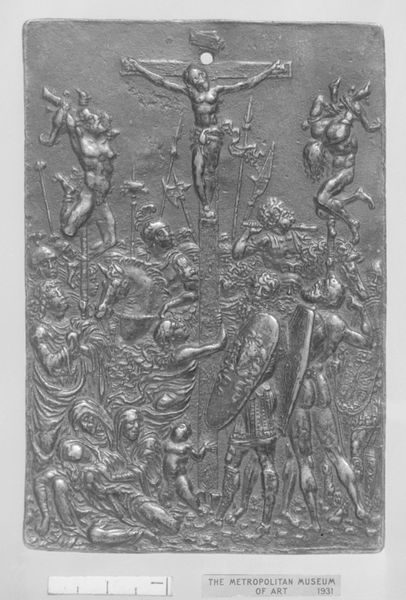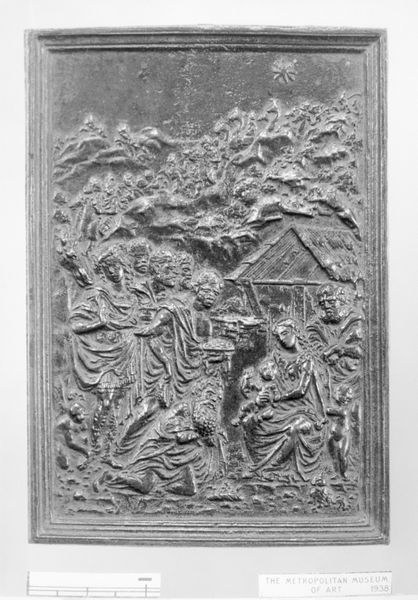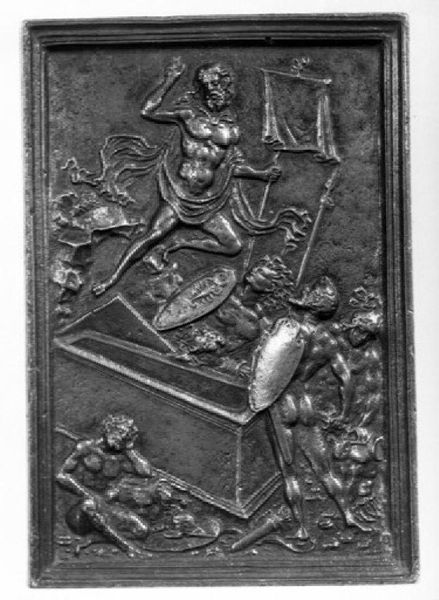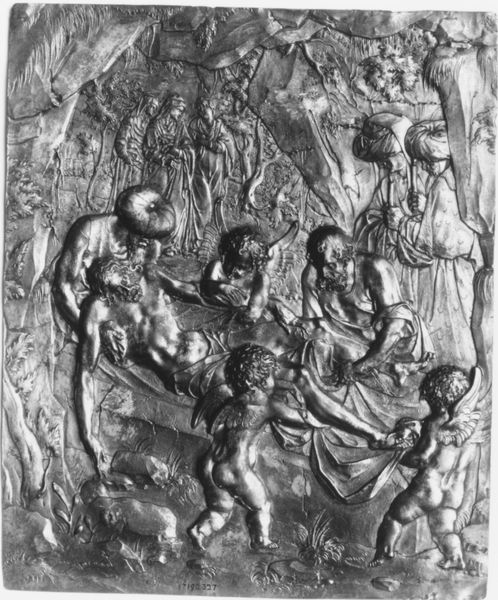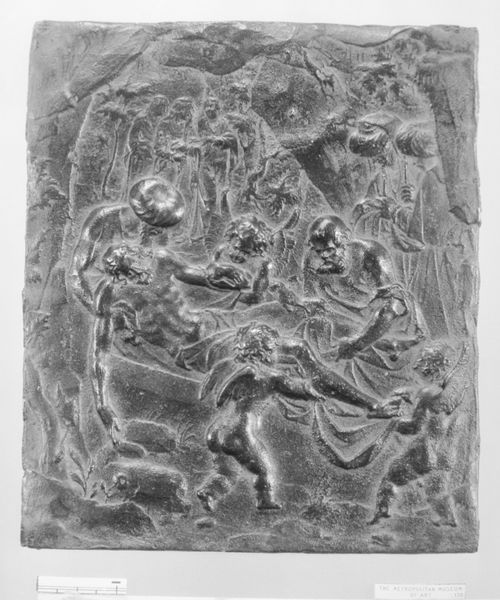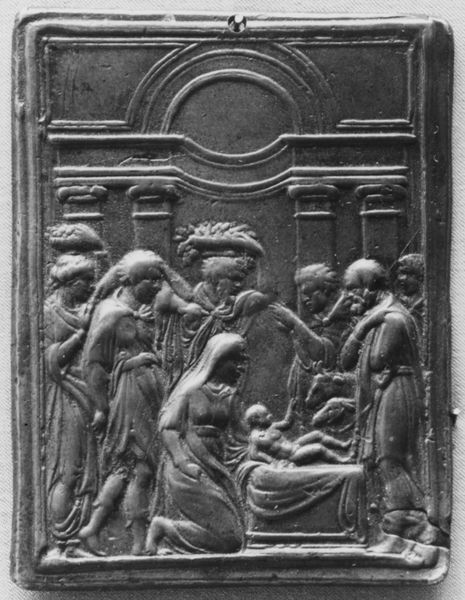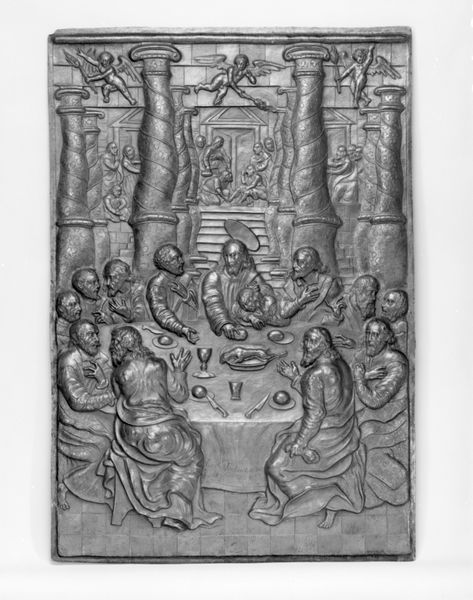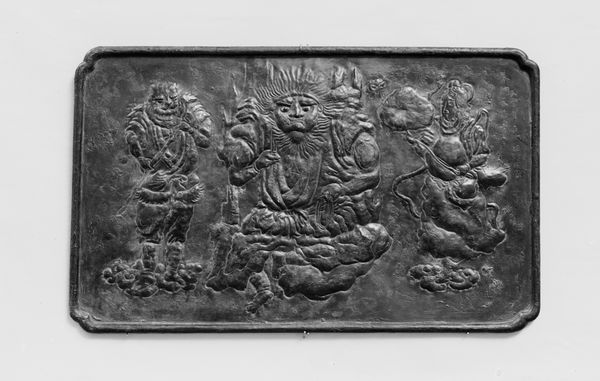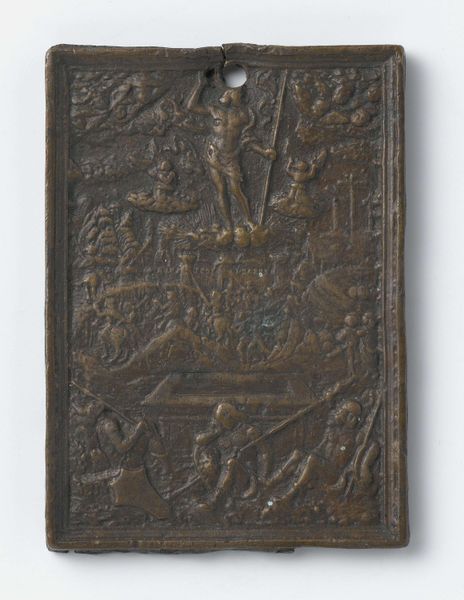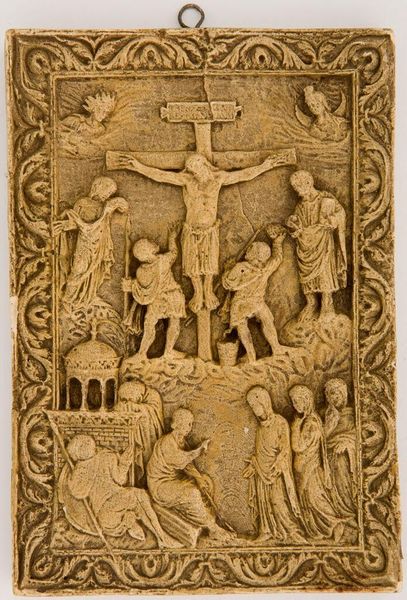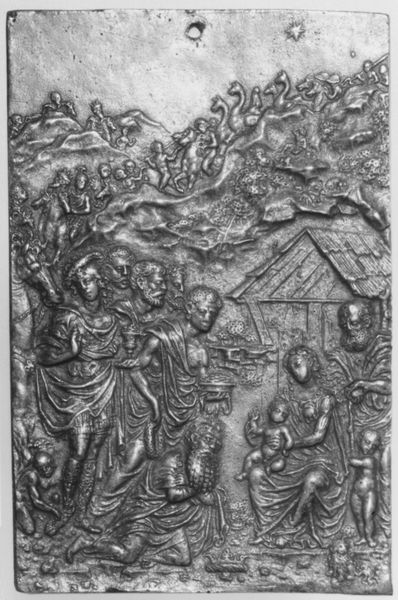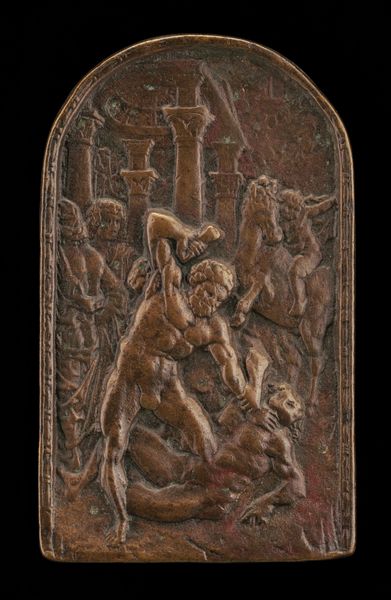
tempera, relief, bronze, sculpture
#
tempera
#
sculpture
#
textured
#
detailed texture
#
relief
#
ring
#
bronze
#
figuration
#
11_renaissance
#
sculpture
#
men
#
crucifixion
#
history-painting
#
decorative-art
#
italian-renaissance
Dimensions: H. 4 15/16 x W. 3 7/16 in. (12.5 x 8.7 cm.)
Copyright: Public Domain
Curator: This relief sculpture, “The Crucifixion” made of bronze by Moderno, circa 1485 to 1499, presents such a vivid scene. The emotional density, achieved in such a shallow relief, is really quite striking. Editor: It certainly is. All of these figures rendered in bronze – you know, at first glance I just see chaos. What are we meant to make of this? Curator: I think focusing on the bronze itself gets us closer. Consider the labor: the mining, smelting, casting, and then the chasing and finishing to achieve this level of detail. Doesn’t the bronze itself, transformed through human effort, become a representation of the material conditions and societal forces that shaped this work? Editor: So you’re saying that understanding the labor involved is crucial to understanding the artwork? Curator: Precisely. The preciousness of bronze, how it signifies wealth and power...it elevates the scene, and also frames the labor inherent in creating the art. The intense effort in production contrasts sharply with the religious subject matter. It begs the question: How did religious narratives intertwine with economics? What was the interplay of faith and artistic patronage? Editor: It does re-frame the work. What about the mass production of such bronzes during the Renaissance? Did that impact its meaning or value? Curator: Absolutely. Bronze reliefs like this were luxury items, produced for an elite market. This challenges the narrative of the solitary genius artist; this work comes from workshop practices, a network of skilled artisans, and a specific economic structure. It highlights art as a form of production and consumption. Editor: That is quite a departure from how I initially approached the piece. Now, seeing it in terms of the labour and market forces makes me consider its societal value in a completely different light. Curator: Indeed. By acknowledging these aspects, we move away from solely admiring artistic skill to understanding how the means of production are equally relevant to the artwork's message and the socio-economic context of its making.
Comments
No comments
Be the first to comment and join the conversation on the ultimate creative platform.
